Lenalidomide in Combination with Arsenic Trioxide: an Effective Therapy for Primary Effusion Lymphoma
- PMID: 32883022
- PMCID: PMC7563318
- DOI: 10.3390/cancers12092483
Lenalidomide in Combination with Arsenic Trioxide: an Effective Therapy for Primary Effusion Lymphoma
Abstract
Primary effusion lymphoma (PEL) is a rare aggressive subset of non-Hodgkin B cell lymphoma. PEL is secondary to Kaposi sarcoma herpes virus (KSHV) and predominantly develops in serous cavities. Conventional chemotherapy remains the treatment of choice for PEL and yields high response rates with no significant comorbidities. Yet, chemotherapy often fails in achieving or maintaining long-term remission. Lenalidomide (Lena), an immunomodulatory drug, displayed some efficacy in the treatment of PEL. On the other hand, arsenic trioxide (ATO) in combination with other agents effectively treated a number of blood malignancies, including PEL. In this study, we present evidence that the combination of ATO/Lena significantly enhanced survival of PEL mice, decreased the volume of exacerbated ascites in the peritoneum, and reduced tumor infiltration in organs of treated animals. In ex vivo treated PEL cells, ATO/Lena decreased the proliferation and downregulated the expression of KSHV latent viral proteins. This was associated with decreased NF-κB activation, resulting in reactivation of viral replication, downregulation of interleukin-6 (IL-6) and IL-10, inhibition of vascular endothelial growth factor, and apoptosis. Our results elucidate the mechanism of action of ATO/Lena and present it as a promising targeted therapeutic modality in PEL management, which warrants further clinical investigation.
Keywords: HHV-8; LANA; immunomodulatory drugs; latent cycle; lymphoma; lytic cycle.
Conflict of interest statement
The authors declare no conflict of interest.
Figures
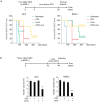
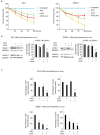
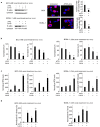

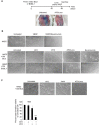
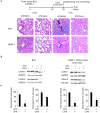
Similar articles
-
Immunomodulatory drugs target IKZF1-IRF4-MYC axis in primary effusion lymphoma in a cereblon-dependent manner and display synergistic cytotoxicity with BRD4 inhibitors.Oncogene. 2016 Apr 7;35(14):1797-810. doi: 10.1038/onc.2015.245. Epub 2015 Jun 29. Oncogene. 2016. PMID: 26119939 Free PMC article.
-
Nm23-H1 induces apoptosis in primary effusion lymphoma cells via inhibition of NF-κB signaling through interaction with oncogenic latent protein vFLIP K13 of Kaposi's sarcoma-associated herpes virus.Cell Oncol (Dordr). 2022 Oct;45(5):967-989. doi: 10.1007/s13402-022-00701-9. Epub 2022 Aug 14. Cell Oncol (Dordr). 2022. PMID: 35964258
-
Primary effusion lymphoma in an elderly patient effectively treated by lenalidomide: case report and review of literature.Blood Cancer J. 2014 Mar 7;4(3):e190. doi: 10.1038/bcj.2014.6. Blood Cancer J. 2014. PMID: 24608734 Free PMC article.
-
Current status of treatment for primary effusion lymphoma.Intractable Rare Dis Res. 2014 Aug;3(3):65-74. doi: 10.5582/irdr.2014.01010. Intractable Rare Dis Res. 2014. PMID: 25364646 Free PMC article. Review.
-
Human Herpesvirus Type 8-associated Large B-cell Lymphoma: A Nonserous Extracavitary Variant of Primary Effusion Lymphoma in an HIV-infected Man: A Case Report and Review of the Literature.Clin Lymphoma Myeloma Leuk. 2016 Jun;16(6):311-21. doi: 10.1016/j.clml.2016.03.013. Epub 2016 Apr 1. Clin Lymphoma Myeloma Leuk. 2016. PMID: 27234438 Free PMC article. Review.
Cited by
-
Recent Advances in Developing Treatments of Kaposi's Sarcoma Herpesvirus-Related Diseases.Viruses. 2021 Sep 9;13(9):1797. doi: 10.3390/v13091797. Viruses. 2021. PMID: 34578378 Free PMC article. Review.
-
The Development and Clinical Applications of Oral Arsenic Trioxide for Acute Promyelocytic Leukaemia and Other Diseases.Pharmaceutics. 2022 Sep 14;14(9):1945. doi: 10.3390/pharmaceutics14091945. Pharmaceutics. 2022. PMID: 36145693 Free PMC article. Review.
-
A Set of 17 microRNAs Common for Brain and Cerebrospinal Fluid Differentiates Primary Central Nervous System Lymphoma from Non-Malignant Brain Tumors.Biomolecules. 2021 Sep 21;11(9):1395. doi: 10.3390/biom11091395. Biomolecules. 2021. PMID: 34572608 Free PMC article.
-
The 'Oma's of the Gammas-Cancerogenesis by γ-Herpesviruses.Viruses. 2024 Dec 17;16(12):1928. doi: 10.3390/v16121928. Viruses. 2024. PMID: 39772235 Free PMC article. Review.
References
-
- Katano H. Pathological Features of Kaposi’s Sarcoma-Associated Herpesvirus Infection. In: Kawaguchi Y., Mori Y., Kimura H., editors. Human Herpesviruses. Springer; Singapore: 2018. pp. 357–376. - PubMed
Grants and funding
LinkOut - more resources
Full Text Sources

